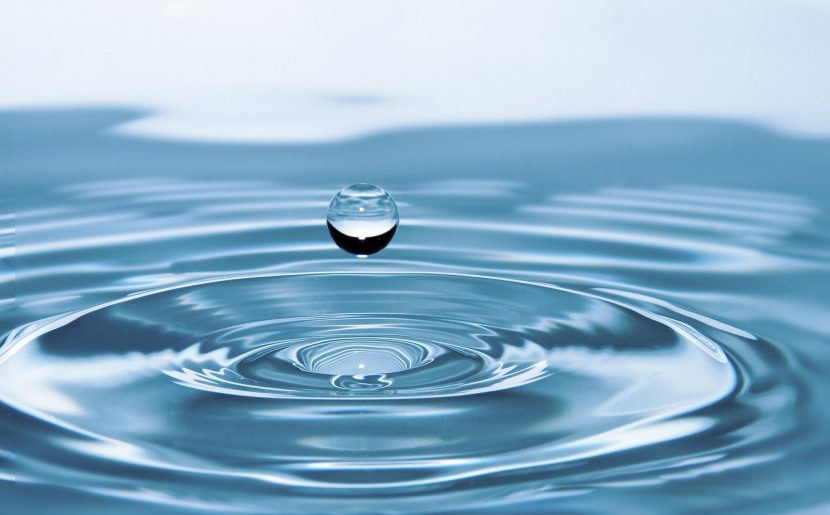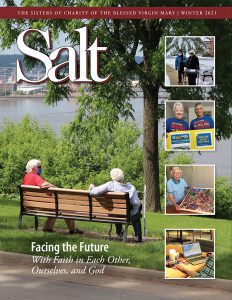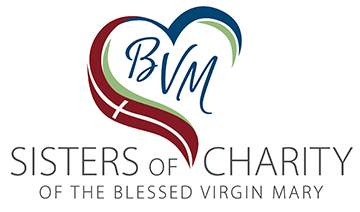It’s All About the Exhale

Featured in the winter 2021 issue of Salt magazine.
by Associate Katie Pfiffner
Recently a friend was playing with the phrase ‘hindsight is 20/20,’ being grateful 2020 is behind us, and she asked me an intriguing question: “How has 2020 changed your vision?”
It wasn’t an easy question to answer, but as I continued to sit with it, I began to realize that in several ways 2020 has changed how I see things. For instance, what’s important and how I want to use my time seem a little clearer now than they did a year ago.
I will admit there were many things over the course of last year that made me feel as though I was gasping for air—taking that quick, shallow inhale, and sometimes even holding my breath. When this happens, there is a constriction physically and often mentally. The muscles in the body stay tight and the mind just keeps spinning, making it feel as though I had forgotten to exhale.
Another thing I see more clearly now is that it’s all about the exhale.
In mindfulness practice, the breath is often used as a way to anchor the attention to the present moment. Pausing to bring the mind out of the past or future, we can experience the breath, always and only right now. When we breathe in, our heart rate tends to increase and when we breathe out, it decreases.
It is the exhale that helps us to relax and let go, and it is often the exhale that steadies us.
Pondering the exhale reminded me of a beautiful Buddhist prayer practice called tonglen, also known as “sending and taking.” Pema Chödrön writes, “In tonglen practice, when we see or feel suffering, we breathe in with the notion of completely feeling it, accepting it, and owning it. Then we breathe out, radiating compassion, loving kindness, freshness; anything that encourages relaxation and openness.”[1]
Many times in 2020, I forgot to breathe out. I would breathe in the pain and suffering and forget that it is in the both the taking and sending that the heart is softened rather than constricted.
Together, the intentional deep inhale—taking in the pain and suffering of another—and the slow exhale—breathing out what will benefit those we are thinking of—can connect us more deeply and cultivate a bottomless compassion within us.
This can be done in the time it takes for one breath or as a formal meditation practice. We can do this practice for ourselves, our family and friends, the person we pass on the street or in the store, and those around the world. There are no limits to our connectedness.
As we move through 2021 together, may we remember that even our breathing connects us and that it’s the exhale—our desire to send love, joy, relief, patience, and calm—that steadies us and expands the spaciousness of our hearts.
 About the author: Katie Pfiffner is spiritual care minister for the Sisters of Charity, BVM in Dubuque, Iowa. She meets with the sisters for mindfulness meditation, Omega discussion groups (based on the work of Sister Ilia Delio, OSF), Praying into the Moment with chair yoga and breath practices, and other activities.
About the author: Katie Pfiffner is spiritual care minister for the Sisters of Charity, BVM in Dubuque, Iowa. She meets with the sisters for mindfulness meditation, Omega discussion groups (based on the work of Sister Ilia Delio, OSF), Praying into the Moment with chair yoga and breath practices, and other activities.
[1] Pema Chödrön – Tonglen: The Path of Transformation, Vajradhatu Publications, 2001
 This story was featured in:
This story was featured in:
WINTER 2021: FACING THE FUTURE In this issue of Salt, we share how the Sisters of Charity of the Blessed Virgin Mary cope with COVID-19, persist in working for justice, and find partners to continue their missions, all while they look for creative ways to communicate, express gratitude, and pray for all the world’s citizens and creatures.
If you would like to receive Salt, contact the Office of Development for a complimentary subscription at development@bvmsisters.org or 563-585-2864.
